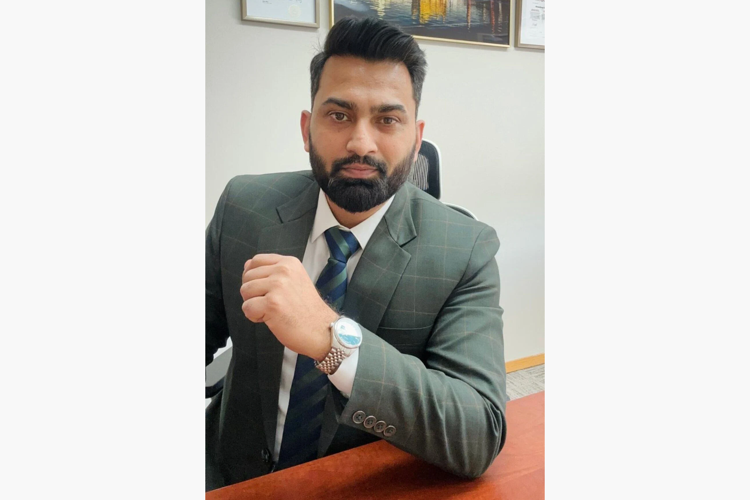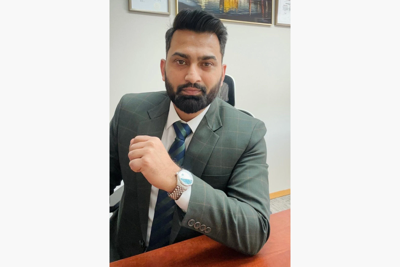A failed refugee claimant came to Amandeep Singh in May for help after he was refused because his claim was “nearly word for word” identical to others before the refugee board.
While the Edmonton-based immigration consultant had heard for a long time that some claimants and their counsel have plagiarized claims to game the system, what struck him was what tool the refugee board and immigration officials use to flag these cases, which he says seems to have happened more often.
“I wouldn’t say this (plagiarism) is something new,” said Singh, who did not take on that client because he didn’t believe the man had a case. “It shows to me that officials are actually using artificial intelligence, so it is easier for them to look at multiple cases at the same time to see if the information in a claim matches with other asylum applications.”
While the refugee board denies the use of AI in its claim processing, the Immigration Department and the border agency — bodies that determine if a foreign national is eligible to seek asylum in Canada and which can intervene in refugee hearings — are less clear on how they identify these cases.ÌýGenerally, officials deem similar claims as a potential indicator of fraud.
In the case that Singh reviewed with personal information redacted, the refugee board adjudicator drew comparisons between the man’s claim and five others.
“I am a follower of the Sikh religion, and my family and I are devout Sikhs … 1became (sic) the member of Khalistan movement (aiming for a peaceful creation of an independent state for Sikh people),” according to the refugee refusal decision, which set out a side-by-side table highlighting each similar paragraph in those claims.ÌýThe parentheses are from the claim, which includes grammatical errors, as cited in the decision.
“The primary objective for joining movement was to establish a new nation for the Sikh community, providing them the freedom to practice their religious activities and ensuring equal rights for all.”
Apart from the different date noting when the claimant joined the movement, the whole paragraph, including the typo “1,” was the same as the narrative cited by the refugee protection tribunal. The claims also referred to visits by Indian authorities to the family homes to look for the claimant and for alleged links to Pakistan.
The person told the tribunal that he did not know why others’ narratives were similar to his word for word, but did explain that what happened to him could have happened to all Sikhs given the circumstances. The refugee judge, however, concluded that’s not reasonable.

Sean Rehaag, director of Refugee Law Laboratory at Osgoode Hall Law School.
Horst HergetSean Rehaag, director of Refugee Law Laboratory at Osgoode Hall Law School, said there are anti-plagiarism tools that universities have used for a long time to find similar bits of text, as well as ways for the refugee board to identify similar claims without using high-tech.
For instance, said Rehaag, a decision-maker may encounter two or more similar claims, and refer to the board administration to look into it further, examining other files from the same country by the same representative. Or decision-makers may talk with one another about a particular type of case, or someone triaging cases discovers a pattern and flags it internally.
Rehaag said the information could also come from immigration and border agency officials, who he said probably have program integrity tools that would allow them to identify suspicious patterns. In those circumstances, he said, officials would then intervene in the refugee proceedings based on integrity concerns.
The Immigration and Refugee Board told the Star that it does not use artificial intelligence at any stage of processing or deciding claims.
“While claims from the same country or region may share common elements, credibility or integrity issues could be raised if review of the files identified substantially similar claimants’ narratives about the specific circumstances of their claim,” the board said in an email.
Where similarities are identified in the process, it said claimants are required to provide an explanation. If the claimant is found to have provided false or misleading evidence, it could lead to a rejection.
“If the IRB had information that a counsel was involved in knowingly assisting a claimant to make misrepresentations to the IRB, for example by presenting a (basis-of-claim) form the counsel knew was not the claimant’s own story, it could result in a report being made to” the counsel’s regulatory bodies, the refugee board said.
The Immigration Department would not say whether artificial intelligence is being used to flag claims that look similar, but noted that no final decisions are made by artificial intelligence and its tools do not refuse or recommend refusing applications for asylum.
“Officers will consider all relevant information, including the claimant’s own statements and documentary evidence,” the department said, speaking also on behalf of the Canada Border Services Agency. “Claims found eligible are referred to the IRB.”
With the number of refugee claims pending in the system reaching 290,000, Singh said any tool that can help Canadian officials to sift out questionable cases and protect integrity would be welcomed.Ìý Â
“I think we are moving in the right direction,” said Singh. “We want to see more of this happening so that we can reduce the burden on the refugee board.”
However, cases with similar language don’t necessarily mean fraud, at least according to .Ìý
In that case, the refugee board rejected the claim and the subsequent appeal at a tribunal after Canadian officials found that the language, phrases and other similarities in the claimant’s story in the “basis of claim” form were “strikingly similar” to five other claimants who travelled to Canada with him from India, and nearly 200 other narratives submitted by claimants from India.
In ruling in favour of the claimant’s appeal, Judge Guy Régimbald said “discrete or incidental” similarities in sentence structure and vocabulary do not in and of themselves impugn a claimant’s credibility.
“Asylum narratives are not exercises in creative writing, and a lack of prosaic originality should not be confused for falsehood, fraud, or the deliberate plagiarism of another person’s story,” he wrote in his decision. “It is altogether reasonable to expect these stories to reflect a certain shared experience.”






























To join the conversation set a first and last name in your user profile.
Sign in or register for free to join the Conversation